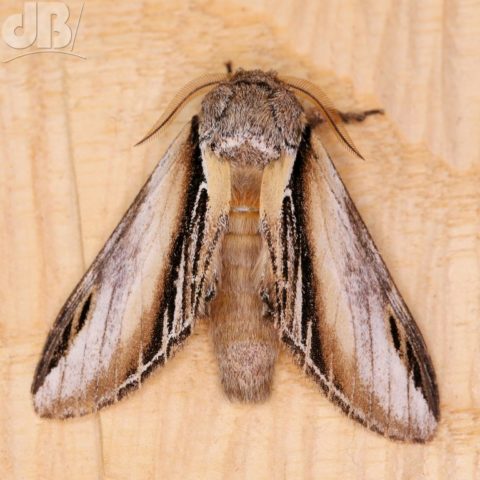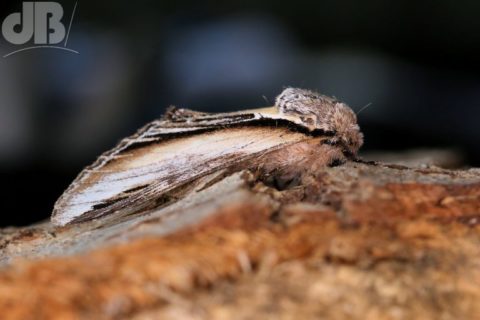Now…the brown and grey moths are not intrinsically boring, each is the pinnacle of millions of years of evolution. But, when you spot something in the scientific trap on a cold, wet morning that isn’t just one of the 25 Heart & Darts in there, nor one of a handful of Vine’s Rustics, Turnip or Cabbage moths, then it is something of a treat. The Puss Moth was a big highlight, and of course, the various Hawk-moths that have come along in recent weeks including Lime, Poplar, Eyed, Elephant, Small Elephant, and Privet.

But, there are some moths that seem so delicately marked as if dusted with charcoal and pastel powders. Take the Swallow Prominent, Pheosia tremula. Tremulous it is indeed, oscillating its wings all the while I tried to get a snapshot but with only a brief interlude somewhere cold would help with when a snappy shutterspeed would not suffice.

There is a Lesser Swallow Prominent, P. gnoma, which isn’t always lesser, or smaller, at all, and is distinguishable in the fully developed adults really only in the difference in one of those charcoal lines and the creamy, white wedges along its wings. In P. tremula the wedge is a thinner slice than in P. gnoma. I’ve had the former in the trap now, but not the Lesser, yet.
You can perhaps see why this moth, which is one of several “Prominents”, has that name for the tuft that sticks out, best viewed side-on, as in the upper of my two photos here. Now, the second half of that name…I reckon it’s to do with the fact that the larvae feeds on the leaves of the shrubby willow known as the sallow, and nothing to do with swallowing and certainly not the migrant birds. At some point, a “w” was added. Peter Marren corroborates this idea in his book on moth names, but doesn’t give any more of an explanation than came to my mind.
I had a look on the German and French entries in Wikipedia to see if there were any additional clues. The French call this moth “La Porcelaine”, which means “The Porcelain” (cowrie shell). In Germany it is “The Poplar Toothspinner”, its larvae also eat poplar leaves and that spinning tooth part refers to the toothy-looking tuft on its back. Toothspinner equates to the genus Notodontidae, of which all of the Prominents are members, including the Coxcomb, Iron, Pebble, and Pale, photos of which are in my Mothematical Gallery on my Imaging Storm site.